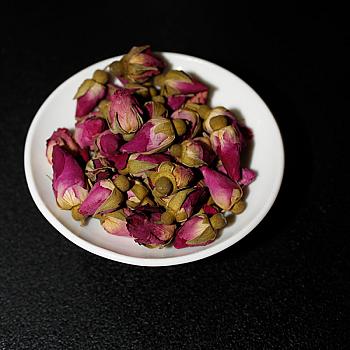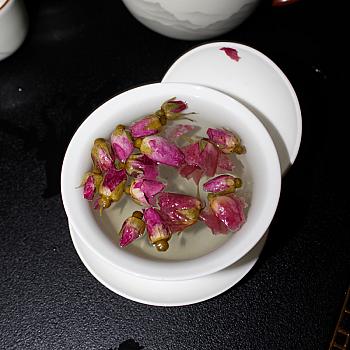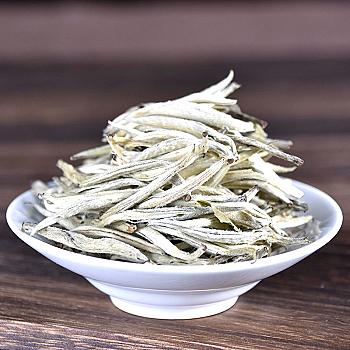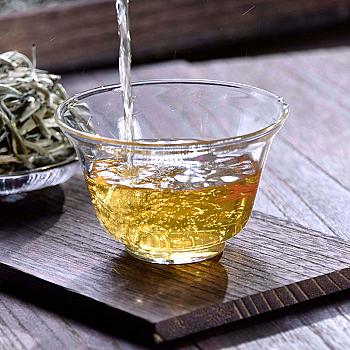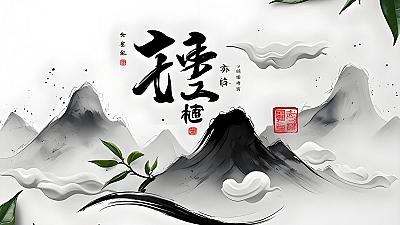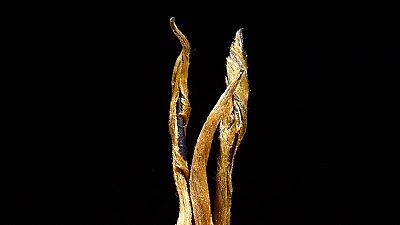
What are the differences and similarities between "Golden Flower" tea and "White Frost" tea?
August 16, 2025
In fact, many people are confused about tea's "jin hua" (golden flower), "" (moldy spots) and "bai xue" (white frost) in the process of buying tea, drinking tea and storing tea, resulting in unnecessary trouble and losses, even causing harm to one's body. So let's systemically explain what "jin hua", " (moldy spots)" and "bai xue" are.
In fact, in the process of buying tea, drinking tea and storing tea, many people confuse "jin hua", "mo bian" and "bai xue", resulting in a lot of unnecessary trouble and losses. Even harm to the body. So let's systematically explain what are the tea leaves "jin hua", "mo bian", "bai xue"? Especially what are the differences between "jin hua" and "bai xue"? Let's see below.

What is Jasmine tea?
The so-called "Goldflower" is a kind of fungi called "Aspergillus", which grows very beautifully and looks like gold flowers under the microscope. It is a beneficial enzyme bacteria that secretes amylase and peroxidase, which can catalyze proteins and starches in tea into simple sugars and oxidize polyphenolic compounds to convert them into beneficial substances for the human body.
What teas can produce golden buds?

In particular, "Gold flower" is also found in Yunnan tea (Pu-erh) and Muzha. Research has shown that the Gold Flower fungus can alter the fragrant properties of tea leaves. Therefore, it cannot be considered as one of the characteristics of "the more aged, the more fragrant."
Fungal tea or moldy tea is tea that has gone bad due to contamination by fungi, which can lead to off-flavors and unpleasant odors.

Tea leaves that have gone moldy turn grayish white and you can smell the moldiness, in sunlight they quiver with dust.
You can use your fingers to roll the tea leaves, if you can make the tea leaves crumble into powder, it means that the tea is quite dry. If not crumbled, it indicates high humidity, and may even be moldy, and more likely to contain mycotoxin; It can also take a small amount to wash with hot water, darker than originally, and has an unusual smell, less fragrant.
Moldy tea contains a variety of mycotoxins such as penicillic acid, chlorotannin and yellowish pigment, thus the moldy tea is not edible.
What's the difference between tea "golden flower" and mold?
Jade is usually situated in the center of tea cakes or bricks, and can only be seen when they are cracked open. Moldy "yellow mushroom" aflatoxins are mostly because they were stored improperly, so they usually only appear on the surface.
The shape of gold flowers is a single, scattered distribution on the tea brick without moldy thread. In the tea leaves, it is relatively firm and cannot be easily wiped away; while the yellow mold and white mold grow in blocks together, with yellow mold there must be mold threads, they are more likely to blow away.
What is white tea frost?

It is commonly known as "tannin", a crystalline formation caused by the oxidation and enzymatic action of tea itself. The process of forming this white deposit is actually the fermentation of the tea leaves, not contamination with external fungi. In the course of this development, the tea's tannins are gradually oxidized and replaced with beneficial substances, and the flavor of the tea becomes less bitter and more sweet, while the color changes from green to yellow, then orange, and in five to ten years or longer, deep red.
How does tea whiteness form?
Excessive water inside the tea leaves constantly moves and evaporates from the surface of the leaves, the internal ingredients of the tea also continue to change. Long-term storage in a low-temperature and low-humidity environment causes moisture from the tea itself to gradually form "white frost".

Powder under a microscope
What types of tea are prone to white hair?
Not all tea leaves will have white hairs phenomenon, usually more common in small green apple, black tea, oolong tea.
What's the difference between "white frost" tea and moldy tea?
On the surface, "white frost" on tea leaves is very similar to mold. Both white frost and mold will have a whitish mark resembling mold on the tea leaves, regardless of whether it's white frost or mold.
"White frost" is white and colorless transparent needle-like crystals, without other colors adhering to it, very pure, no odor or impurities, the tea leaves will not rot into lumps.
"Moldy" refers to white hair growing on tea leaves, which emit a moldy smell when smelled. Severe moldy tea will rot and form clumps with green hair on top.

What are the differences and similarities between the "golden flowers" and "white frost" on tea leaves?
Commonalities:
1, they grow on tea leaves
2, all are changes in tea internal quality.
3, all need a certain period of storage before they can be produced.
All are good tea quality shows.
All are beneficial to the body and harmless.
Differences:

1, Gold flowers are grown on tea leaves (tea cakes, brick tea), and white frost is attached to the surface of the tea leaf.
2, Gold flowers are gold yellow, white powder is crystalline, transparent, and becomes white in a certain quantity.
3, Gold is not easy to grow at low temperatures, and white frost grows more easily in low temperature and low humidity.
4, Gold flowers are beneficial bacteria bodies, white frost is a crystalline substance, an acidic matter.
So, as can be seen from above, no matter whether it's the "gold flower" or "white frost", they are all on the tea leaves and are not foreign objects, but beneficial substances to the human body and have no harm. They also reflect the excellent quality of tea.

However, they are difficult to distinguish when trying to differentiate them because both have a similar form and are easily confused with another type of tea - "moldy" or mold. Because whether it is Jinhua, moldy or Baihuang in appearance all look extremely similar, without precise scientific instruments for experiment and observation, or enough systematic knowledge and tea experience, it is difficult to differentiate them within a short period.
So, whenever we talk about these two things, we'll usually contrast with the third one, then it will be more comprehensive and systematic to distinguish between their similarities and differences. This can help us avoid a lot of trouble in buying tea, drinking tea, and storing tea, and most importantly, it's good for the health and safety of tea leaves!
